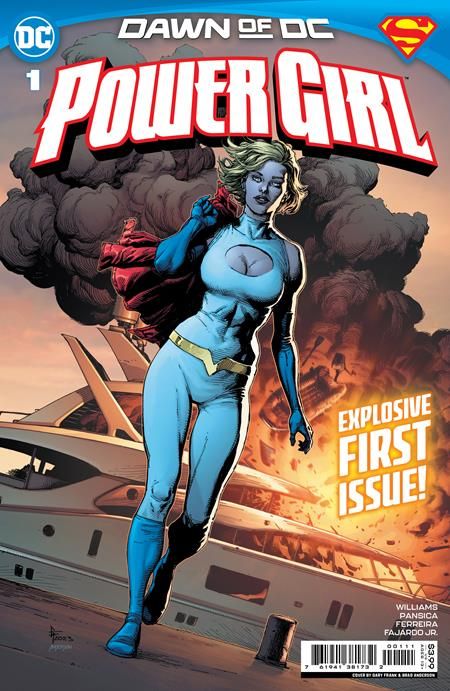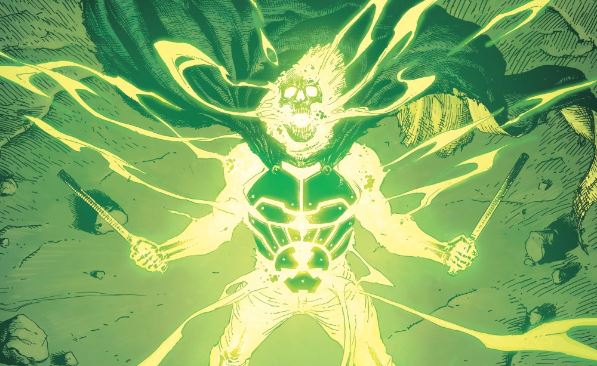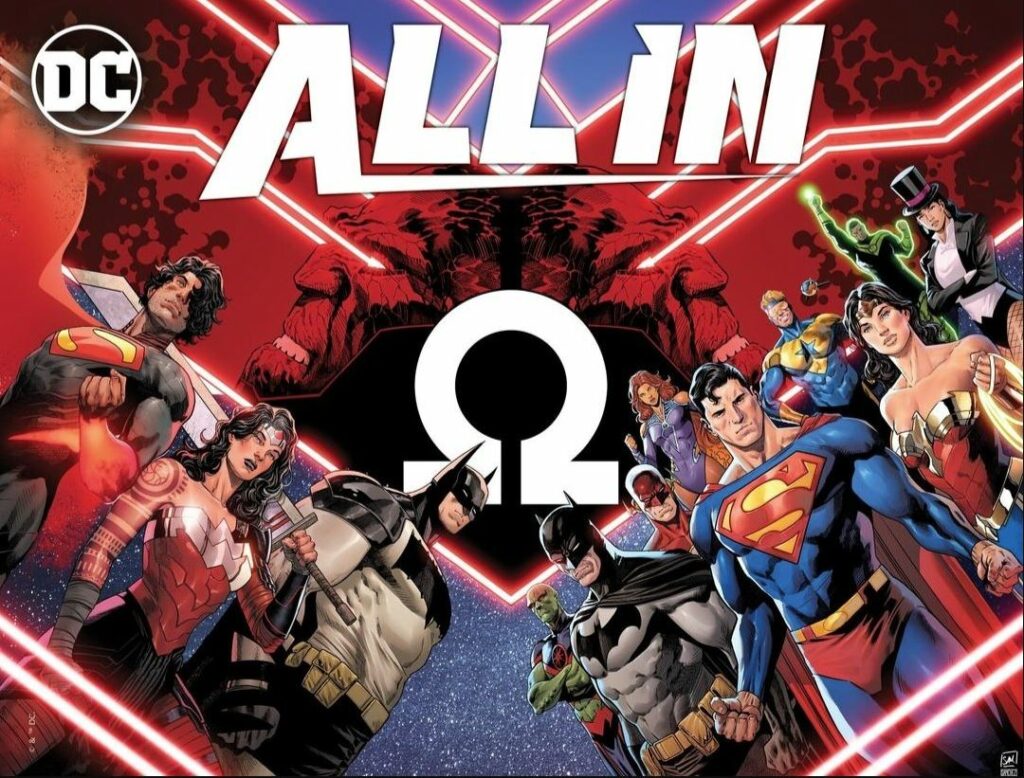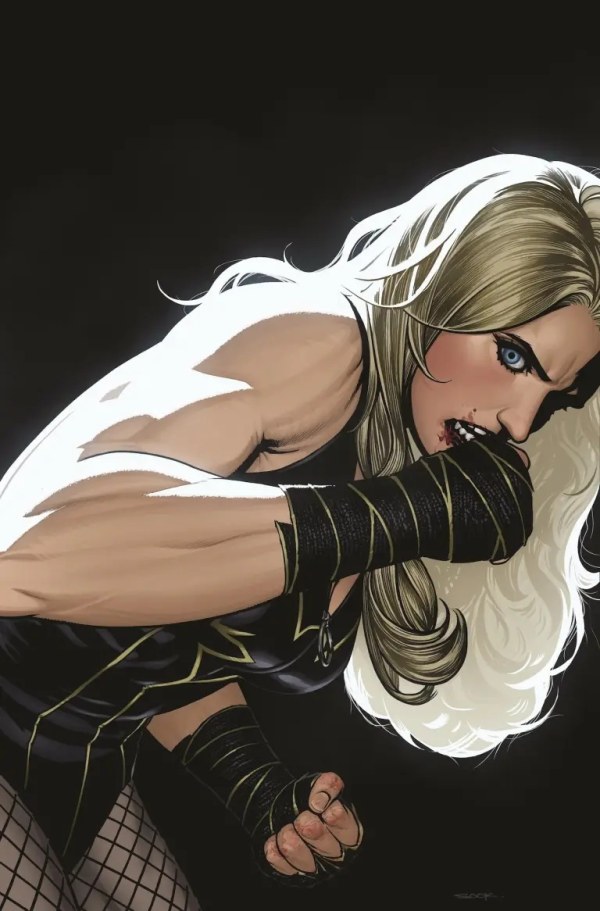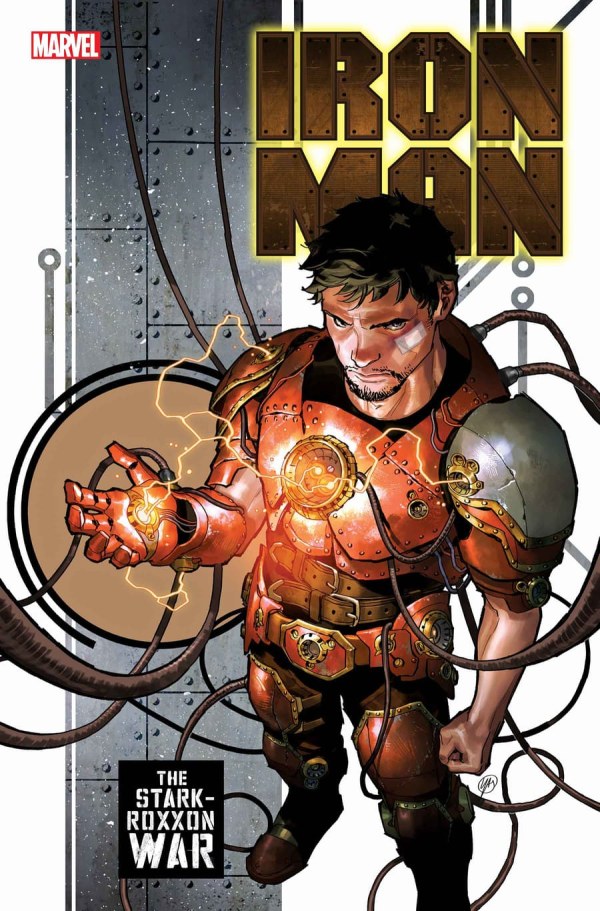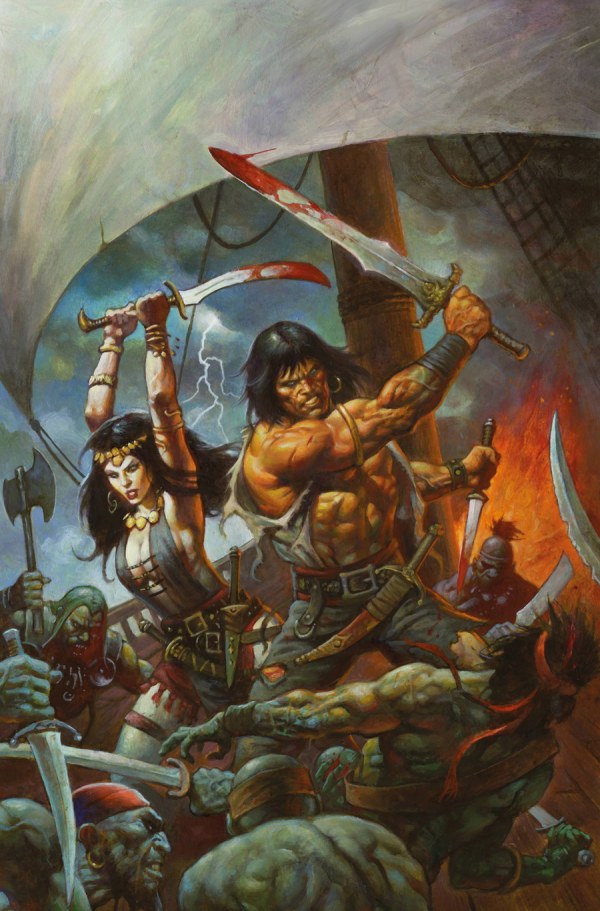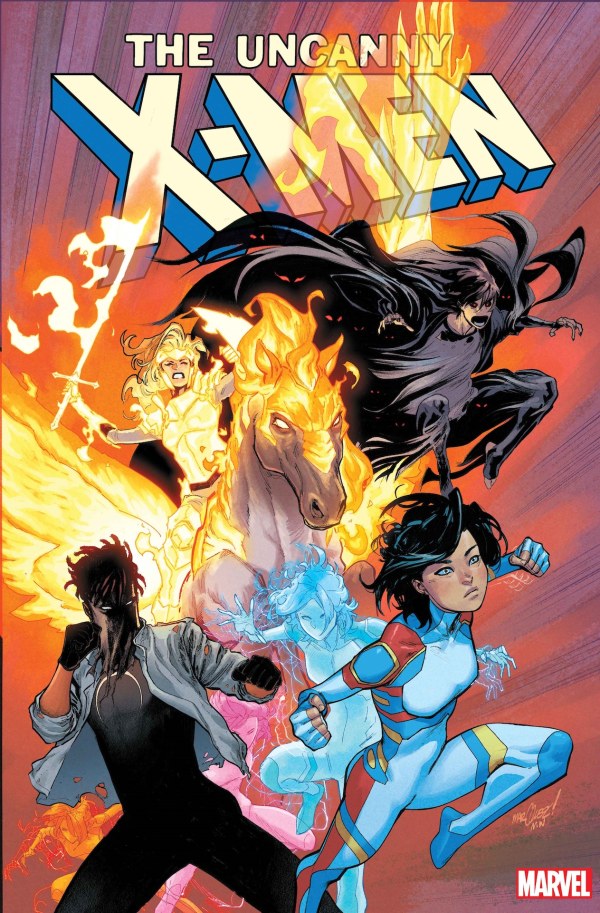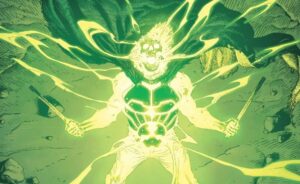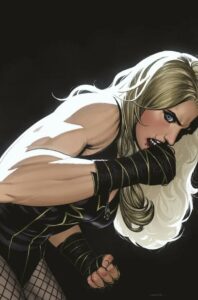Power Girl #1 (2023) is a bit of a dark horse of expectations.
Historically, I’ve never been a huge Power Girl fan (nor, in fairness, have I exactly been a detractor either). She’s always seemed to me to be the confusing duplicate, off-shoot, or variation of Supergirl, whose many backstories and continuities have thrown even my veteran comics-reading brain through a bit of a loop.
Couple that with her relative lack of presence since Flashpoint – at first being replaced by her new, Earth-2 self, later being reintroduced through Justice League and Doomsday Clock and all the rest of it – and the bevy of questions that her very presence raises has never exactly endeared me to her character. After all, I’m already a Hawkman fan – I don’t need another set of complicated backstories to straighten out in my head.
So, imagine my surprise when I read about her newest adventures in the pages of Lazarus Planet, and all of a sudden I find myself oddly enraptured. This story is different to anything I’ve seen Power Girl in before – hell, it’s different from anything else in Lazarus Planet too. It’s Leah Williams’ first story post-X-Terminators, and it’s traded the zany, grindhouse script of that for this ephemeral, dreamlike quality. She’s also joined by Marguerite Sauvage, whose painted pages have always transported me to a world beyond the punching and bruising of most superhero comics, and before I know it, I’m onboard.
Suddenly, I’m a Power Girl fan.
Or at least, I’m a fan of this Power Girl. The one that’s figuring out her place in the world, whose had these strange and wonderful new abilities foisted upon her by magical rain that takes the one woman who doesn’t want to connect with anyone, and forces her to connect to everyone. The woman who can move mountains like it’s nothing, who now needs to fight a battle of the soul rather than a battle of lasers and capes and fists.
It’s a controversial new direction for certain long-time fans, certainly. The abandonment of the Karen Starr identity and the newfound tension between her and the Super-family, as shown in the backups of Action Comics, have some fans split. But for me, as someone judging it on the merits of the story it sets out to tell and the success it has in telling it, I felt there was something really special being built here.
Then, I read Power Girl #1, and honestly? I feel like I got on the train going in the right direction, but I’ve stepped off at the wrong stop.
A Technical Analysis of Power Girl #1
At the top, I want to stress that the actual quality of the issue is reasonably strong. Williams’ trademark ability to carve out distinct character voices continues to be utilised here to great effect, and Eduardo Pansica delivers a diversity of brilliant visual characterisation throughout – both for Paige and her partner Omen. Balancing some classically powerful images of Power Girl with accomplished pages of visual storytelling in the quieter moments, Pansica shines at crafting a character that feels real and filled with life.
Much like his earlier work on Suicide Squad, it excels in no small part due to how well he threads together his perhaps 90s-inspired eye for detail and dynamic uses of the physical form, with a willingness to really let his figurework emote. Take the following two pages, for example:
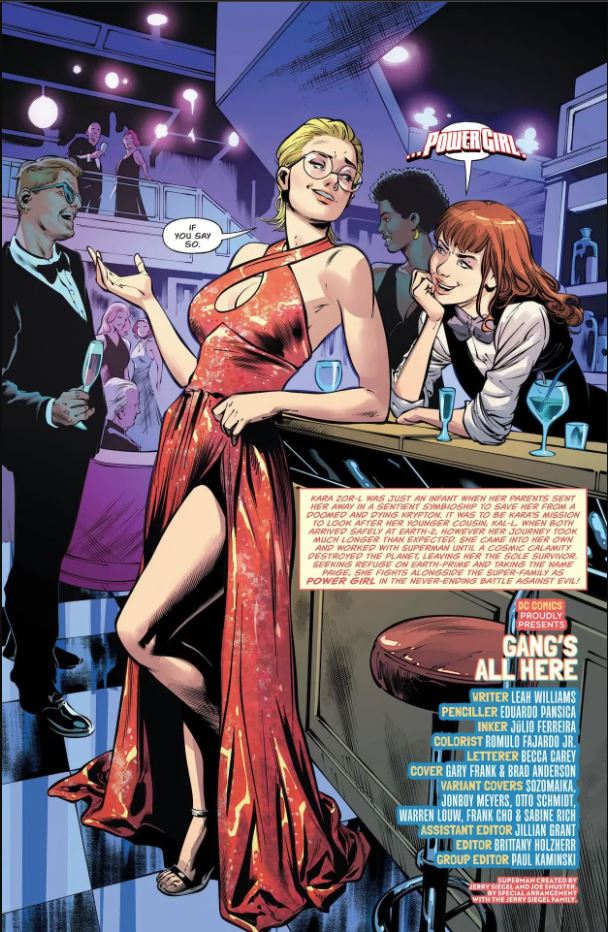
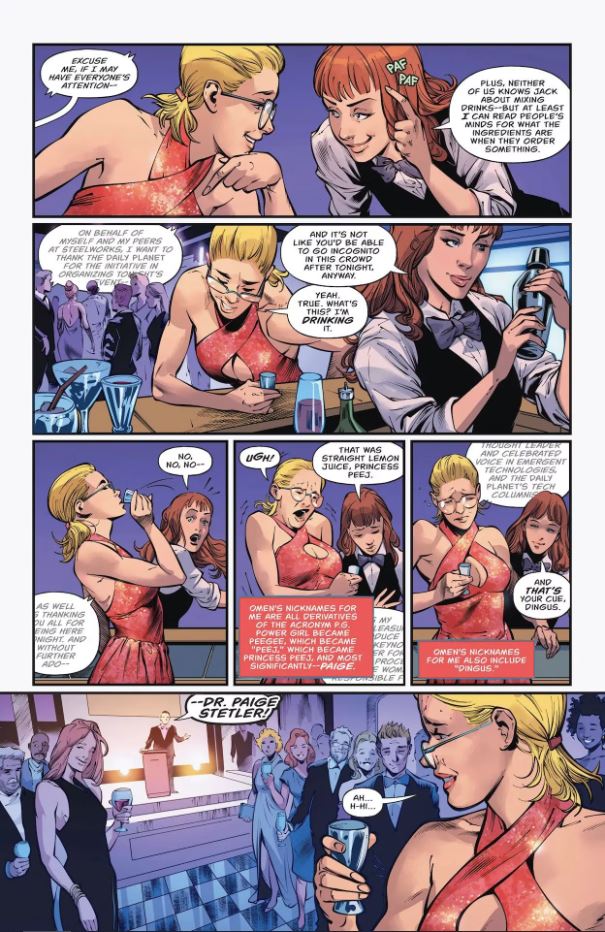
Pansica’s introduction of Power Girl is extremely effective at conveying everything you need to know about her. Not only is she situated centrally, taking up more room and therefore demanding more attention than any other character, but the framing of the page supports this. Omen and the two nearest partygoers are all turned inwards towards her, their attention drawing yours.
The presence of her physical stature on the page, coupled with its compositional elements, make her the star of the show in a way that emanates confidence, elegance and a quiet but unmistakable sense of power.
The heroic, action-hero component is also subtly underscored through Romulo Fajardo Jr.’s smart use of red on her dress (tying into the red of her costume and its general aggressive tones), and then there’s the Clark Kent-esque glasses. It trades on some archetypal elements of superheroes like shorthand, establishing who she is and how she should be read as a character within one image.
Then, on the following page, Williams and Pansica find the depth within that powerful first impression. We’re shown a softness to her, particularly around Omen, where her emerging feelings of otherness peel back that faultless exterior. It becomes charmingly clear that this “Paige Stetler” identity is very much worn like a shirt two sizes too big. It may not be the steady-headed Karen Starr that some fans are familiar with, but as character work in-and-of itself it’s incredibly proficient.
And if there’s one word I had to land on to describe Power Girl #1, it’s that: proficient.
Normally, that wouldn’t ring in the ear like an indictment – and for readers who are curious about checking out this book and have no prior relationship with the recent stories that preceded it, it shouldn’t be. But as someone who was wedded to that feeling I had reading the Williams/Sauvage stories, I was anticipating being able to describe this issue another way.
Bold. Creative. Experimental.
Unique.
Unfortunately, this leads me to my issues with the issue…
Knowing Your Audience
Power Girl #1 leaves a lot to be desired – ironically because it tries to broaden its appeal to as many readers as possible.
Regardless of the dissent it caused among certain fans, whatever success the lead-in stories have had – success that was enough to greenlight a whole ongoing series – it was due to the unique identity of the stories being told.
Power Girl, for me, has always suffered from a feeling of redundancy. She’s the other Kara, yes, but speaking more broadly I’ve never been sure what she offers the DC landscape (and the publishing line) that other characters don’t already cover. Is there anything that a Supergirl-led action-based series couldn’t achieve that a Power Girl one could? Perhaps that’s being unfair, and those more versed in her history would likely have a litany of highly specific reasons that the two don’t overlap nearly as much as you think. But to a relative layman in this area like myself, the delineation can be hard to find.
That’s why, when this new approach arrived in Lazarus Planet and Action Comics, I was so engaged. Finally, someone had found a way to radically innovate on what was there without (in my eyes) throwing anything away. It was fresh. It was inviting. It was just weird and different enough that it felt like it had a real sense of personality and something it was trying to explore.
It knew what it was, and despite not being to everyone’s taste, it committed to it. That specificity is exactly what binds people to something emotionally, because it feels like it was made for them.
In many ways, I was expecting Power Girl #1 to be more Sandman than Superman. Williams had certainly proven to be capable of thinking outside the box of what a superhero comic could, or more importantly should be.
Throughout the Power Girl Returns arc, Williams and Sauvage took the classic trappings of the character, and the genre, and turned it on its head.
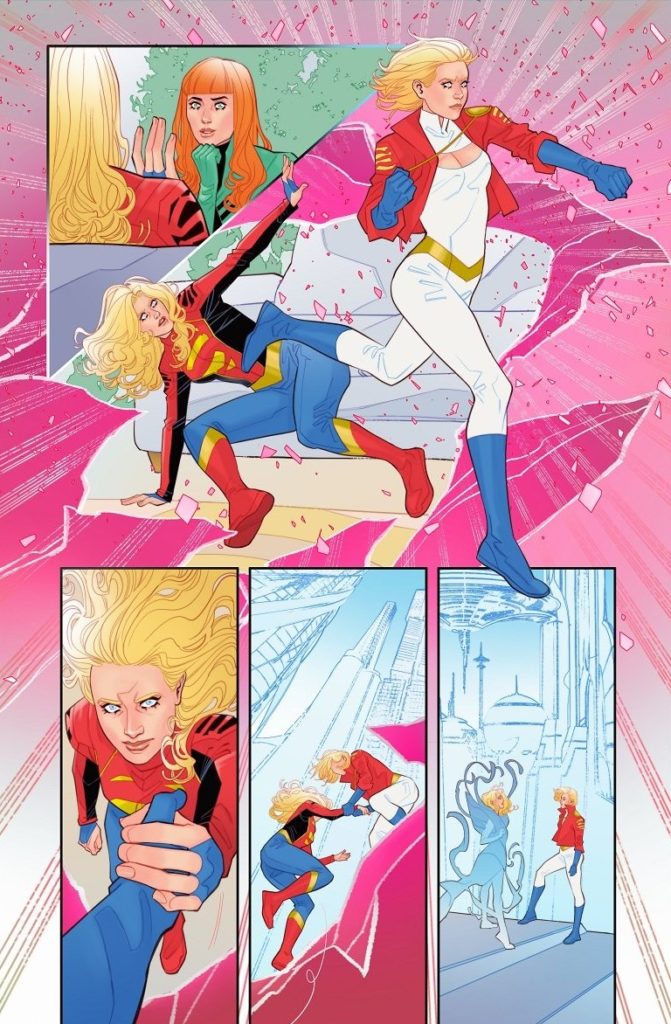
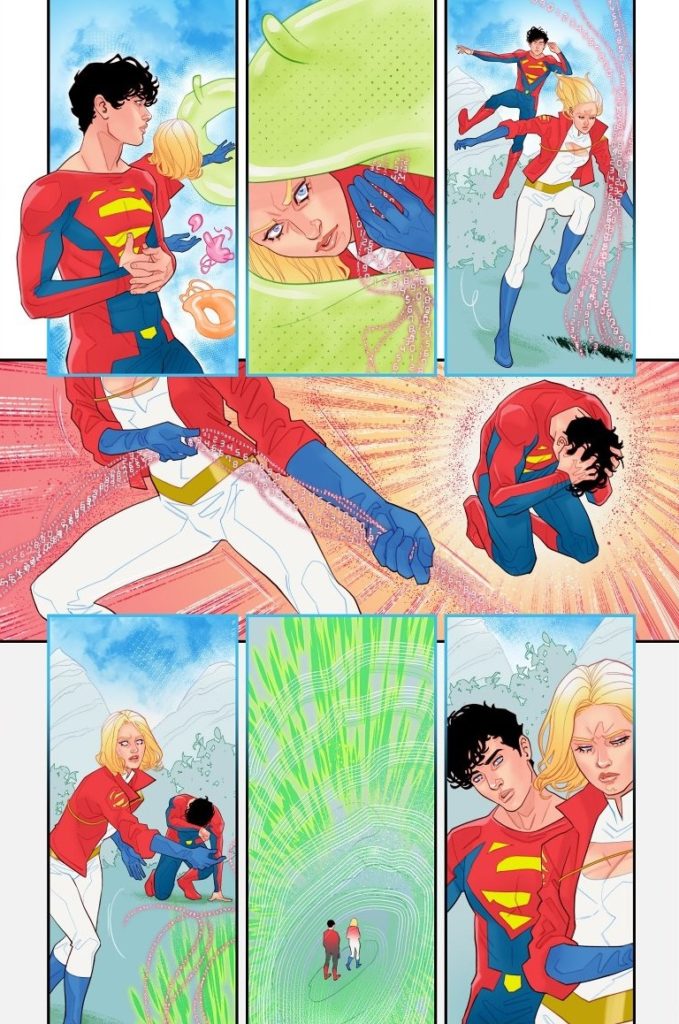
The villain of the week was replaced with the patient of the week, as Power Girl put her new psychic powers to use healing whichever troubled soul walked through her doors. Similarly, violence was recontextualised as a narrative tool as well. It wasn’t as if she wasn’t punching anything – she makes sure Johnny Sorrow gets a few good licks in during Power Girl Special #1. But that punching served a different purpose. Rather than physically knocking some sense into her opponents, the action of each story was more about Paige navigating the astral plane and finding literal ways of solving metaphorical problems.
Instead, what we have with Power Girl #1 is a book that relies on that build up, and the deeply idiosyncratic approach it took to revitalising a character long-underserved, and flattens it out.
By replacing Sauvage with Pansica, the story loses its unique sense of visual identity. Through no fault of his own, for his work is exemplary at performing what this story seems to require, the visual element of this book no longer separates it from every other action-oriented cape comic on the stands, and instead sidles up amongst them.
It’s trying to broaden its appeal to a more mainstream comics audience. Possibly worried at the online backlash the initial stories received from being too much of a departure from classic Power Girl fare, I would wager. Yet, not only should the fickle whims of the internet never be used as a litmus test for taste, DC have unfortunately moved away from the very identity that helped sell the story with the new readership it was cultivating in the first place.
What remains is a book that looks nothing like the stories I fell in love with, playing much more like traditional superhero action, all the while still wrapped up in all the plot beats that made it controversial to begin with: the astral powers, the separation from the Super-family (and moreover the JSA), and of course the name change.
There are whole pages dedicated to explaining the move from Karen Starr to Paige Stetler here, which normally I would applaud as a necessary piece of onboarding for new readers, but instead feels obtrusive. Longtime Power Girl fans already know about the name change – and no amount of continual explanation will change whatever opinion they’ve landed on. New readers, on the other hand, have no concept of it being something that needs explanation. Power Girl #1 would have been better suited saving the time and being confident in its new direction, offering little if any explanation and instead leaning in to what makes this new take so different.
The result is a debut issue that seems almost at odds with itself, and its various audiences. It speaks to those its recently brought in with almost an aloofness, as it shifts into something it seemed to be innovating away from before. Meanwhile, it can’t entirely speak a more mainstream language, as those veteran readers are still asking for certain elements of the new status quo to be dropped.
You Can’t Always Go Home
Conflicted, that’s where I’m at with this issue. Beyond the genuine elation that a character like Power Girl can get an ongoing series greenlit in today’s market, I find myself unable to shout from the rooftops about how much I enjoyed this debut.
So much of this issue is things being done right. Pansica delivers quality draftsmanship that somehow entreats the reader both to strong, charming moments of Power Girl in her civilian identity as well as awesome, full-page splashes of the kick-ass hero Paige is so good at being. It ties in softly with the ongoing conflicts in Action Comics, with the Blue Earth terrorist movement being used to great, additive effect here without causing the reader to feel like they’ve missed something. And, on top of all that, Williams’ and co. continue to mine wonderful chemistry out of Power Girl and Omen.
However, I can’t help but read this with a sense of what could have been.
The empath-detective angle from Action Comics #1050-1053 is gone, and with it Sauvage’s talents at rendering extra-dimensional trips into the psychic realms. Where once this series was weaving traditional superheroics with something between psychologically realised experimental storytelling, and the visual diversity of Ditko’s Doctor Strange, now it’s playing it much more down the middle.
And in a world where the Super-family has more books being published concurrently than ever, creating ways of distinguishing between them should be paramount in DC’s efforts. Otherwise, should a Supergirl series find its way onto shelves at the same time (a possibility that looks likely, given Mariko Tamaki’s Supergirl Special later in the year) I worry that DC will over-target the same audience, and sales will potentially cannibalise.
Power Girl #1 is, ultimately, a strong book that many fans will likely find good fun. Unfortunately, in a world where “good fun” isn’t hard to come by on the shelves, and even harder to stand out against, I’ll always mourn the possibility of having something that found such strength in its atypicality.


